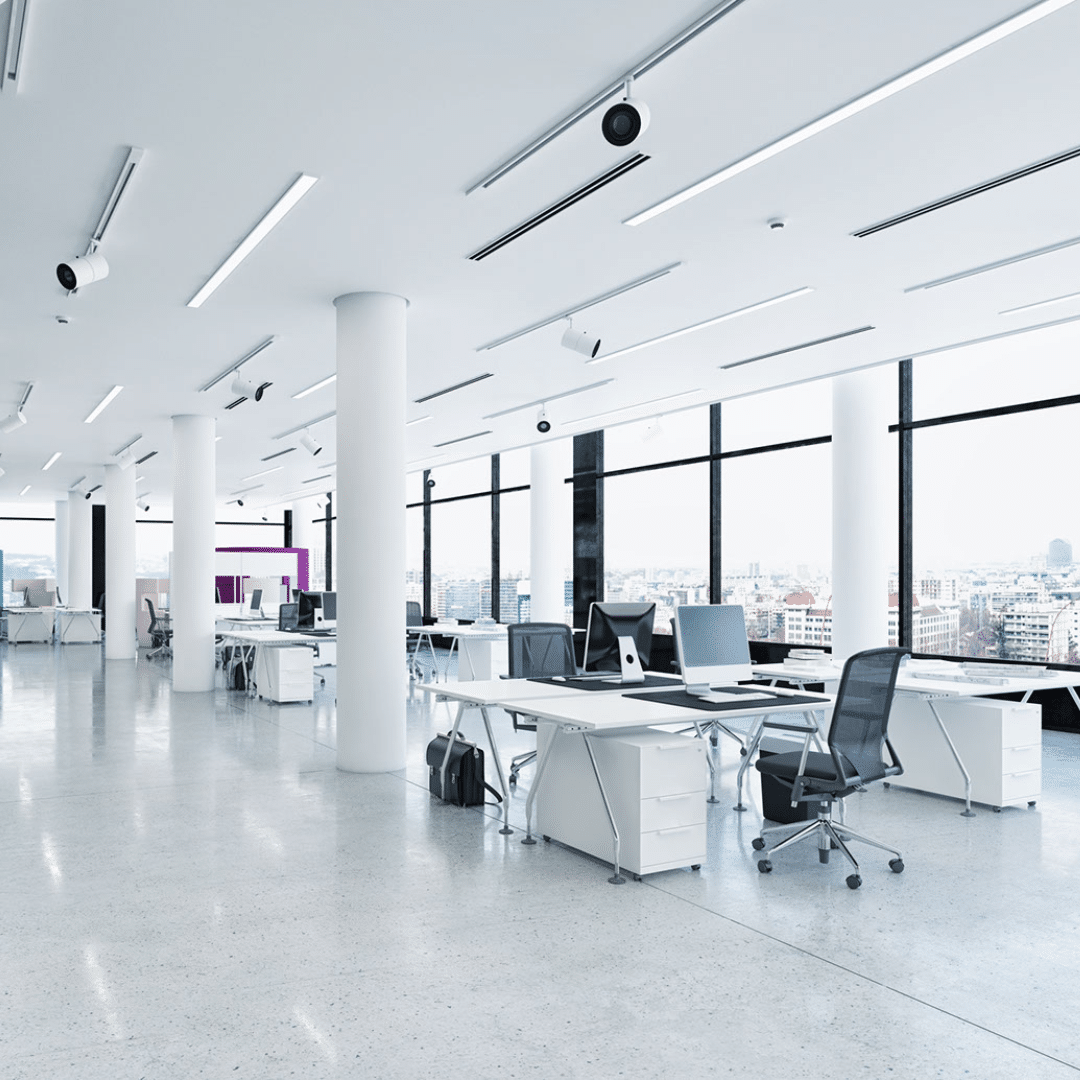3 Ways to Rethink Your Workplace Design

3 Ways to Rethink Your Workplace Design
The pandemic created a unique opportunity for businesses to rethink their workspace format. While stay-at-home orders were in place, offices were forced to rework the way business operated. However, as we come out of the pandemic, there is an opportunity to rethink and re-imagine what the workplace looks like permanently.
Explore 3 ways you can rethink your workplace design and setup
Healthier Workspaces:
Challenge: There are numerous places throughout a workspace that have a high touchpoint (ie: phones, doorknobs, elevator buttons, etc.). Prior to the pandemic, a nightly or weekly cleaning throughout the space was normal. Yet, work place health is now a top concern for every business. More frequent cleaning is mandatory for employees’ health. This is a perfect area to rethink how your space operates. Solutions:
- Use touchless experiences. For example, elevator buttons can be navigated through a personal cell phone!
- Include more outdoor spaces for employees to work and collaborate.
- Create a biophilia experience to enhance mental health (Biophilia – an innate human instinct to connect with nature and other living beings).
- Improve air flow throughout the space
- Create better air flow to enhance
Intentional Workspaces: Challenge: Workspaces were designed based on the needs of the organization more-so than the needs of the employees. Cubicles, closed-door offices and one collaborative spaces are a way of the past. Solutions: Rethink what a typical day is like for the employees. What types of collaboration are required? What has to be done at an office versus at home? How much time do people spend in meetings to work through challenges?
- Create spaces for people to be alone for reflection and to recharge mentally
- Allow for collaborative workspaces
- Offer distraction-free spaces for concentrated work time
- Include amenities that enhance employees’ productivity in each location
Inclusive Workspaces: Challenge: Each employee has an individual personality type that is unique to them. Designing a space that includes all personality types can be a challenge. Solution: consider who your employees are on a personality level.
- Create a universal design that appeals to the majority of personality types (ie: everybody does not love bright colored walls – try using one wall as an accent color, while the rest are a neutral color)
- Improve mental health of employees by including the local community.
Workspace configurations are endless – what changes can you incorporate today to improve the employee experience?